
Christopher Columbus was an Italian explorer and navigator from the Republic of Genoa who completed four Spanish-based voyages across the Atlantic Ocean sponsored by the Catholic Monarchs, opening the way for the widespread European exploration and European colonization of the Americas. His expeditions were the first known European contact with the Caribbean and Central and South America.

Dom Henrique of Portugal, Duke of Viseu, better known as Prince Henry the Navigator, was a central figure in the early days of the Portuguese Empire and in the 15th-century European maritime discoveries and maritime expansion. Through his administrative direction, he is regarded as the main initiator of what would be known as the Age of Discovery. Henry was the fourth child of King Dom John I of Portugal, who founded the House of Aviz.

Bartolomeu Dias was a Portuguese mariner and explorer. In 1488, he became the first European navigator to round the southern tip of Africa and to demonstrate that the most effective southward route for ships lies in the open ocean, well to the west of the African coast. His discoveries effectively established the sea route between Europe and Asia.
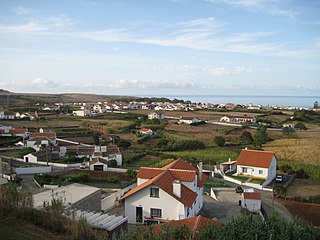
Vila do Porto is the single municipality, the name of the main town and one of the civil parishes on the island of Santa Maria, in the Portuguese archipelago of Azores. Its nearest neighbor, administratively, is the municipality of Povoação on the southern coast of São Miguel, and it is physically southwest of the islets of the Formigas. The population in 2021 was 5,408, in an area of 96.89 km2 (37.41 sq mi).

Santa Maria is an island in the eastern group of the Azores archipelago and the southernmost island in the Azores. The island is known for its white sand beaches, distinctive chimneys, and dry warm weather.
Bartolomeu Perestrello, 1st Capitão Donatário, Lord and Governor of the Island of Porto Santo was a Portuguese navigator and explorer that is claimed to have discovered and populated Porto Santo Island (1419) together with João Gonçalves Zarco and Tristão Vaz Teixeira. The account of his participation in the discovery is disputed by some historians.
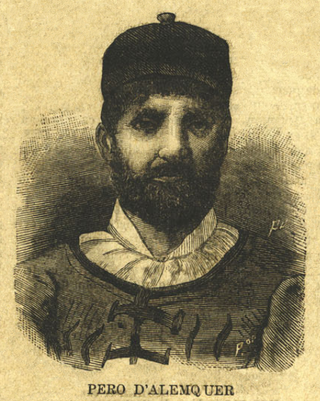
Pêro de Alenquer was a 15th-century Portuguese explorer of the African coast.

Paulo Dias de Novais, a fidalgo of the Royal Household, was a Portuguese colonizer of Africa in the 16th century and the first Captain-Governor of Portuguese Angola. He was the grandson of the explorer Bartolomeu Dias.
John Lewis Heilbron is an American historian of science best known for his work in the history of physics and the history of astronomy. He is Professor of History and Vice-Chancellor Emeritus at the University of California, Berkeley, senior research fellow at Worcester College, Oxford, and visiting professor at Yale University and the California Institute of Technology. He edited the academic journal Historical Studies in the Physical and Biological Sciences for twenty-five years.
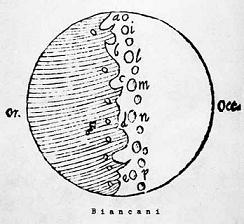
Giuseppe Biancani, SJ (1566–1624) was an Italian Jesuit astronomer, mathematician, and selenographer, after whom the crater Blancanus on the Moon is named.
Cosmographia may refer to:
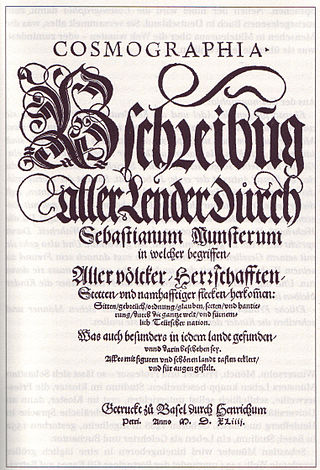
The Cosmographia ("Cosmography") from 1544 by Sebastian Münster (1488–1552) is the earliest German-language description of the world. It also contains the earliest preserved text in the Latvian language.
Bartolomeu is a given name of Portuguese, Galician or Romanian origin. It is a cognate of Bartholomew. Notable people with this name include:

Galileo di Vincenzo Bonaiuti de' Galilei was an Italian astronomer, physicist and engineer, sometimes described as a polymath. Commonly referred to as Galileo, his name is pronounced. He was born in the city of Pisa, then part of the Duchy of Florence. Galileo has been called the father of observational astronomy, modern-era classical physics, the scientific method, and modern science.

The Hermitage of Nossa Senhora dos Anjos, is a hermitage/chapel located in the village of Anjos, on the northcoast of the civil parish of Vila do Porto, on the island of Santa Maria in the Portuguese Azores.
The year 1561 in science and technology included a number of events, some of which are listed here.
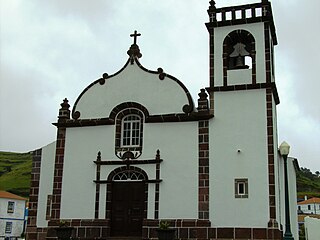
The Church of Santa Bárbara is a Roman Catholic church in the civil parish of Santa Bárbara, municipality of Vila do Porto, in the archipelago of the Azores. Located in the valley of the same name, the parochial church of Santa Bárbara was constructed sometime in the early 15th century and served the impoverished parish throughout its history, supported by personal donations and community assistance.
José da Silva Costa was a Portuguese economist, professor, researcher, and consultant.
Velho is Portuguese for old, and may be a surname as well as part of a toponym. It may refer to:











